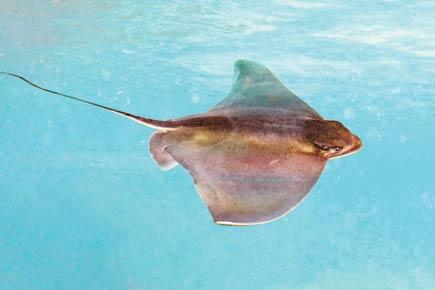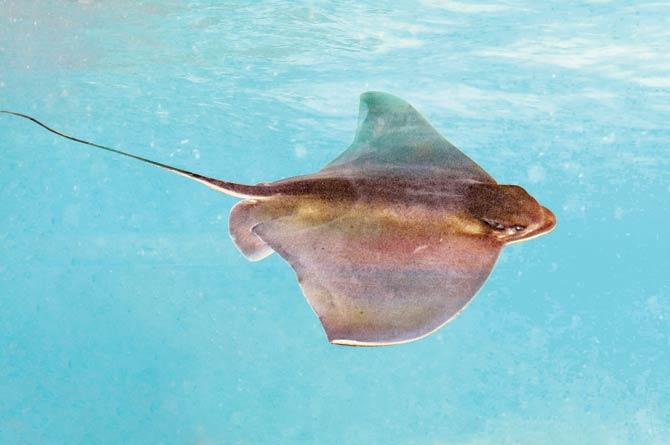Au00e2u0080u0088Decade ago on September 4, 2006, the conservation community was plunged into shock with the accidental death of Stephen ‘Steve’ Robert Irwin


Stingrays do not have bones. Instead, they have cartilage, the same material that builds our nose
 Au00e2u0080u0088Decade ago on September 4, 2006, the conservation community was plunged into shock with the accidental death of Stephen ‘Steve’ Robert Irwin. Nicknamed ‘the Crocodile Hunter’, Steve’s death was the result of a stingray barb piercing into his chest while filming Ocean’s Deadliest, an underwater documentary. He was reportedly swimming in chest deep waters and was a couple of metres near the stingray when the fish accidentally backed up. It was sheer coincidence and a matter of chance that the barb or sting of the otherwise docile ray (fish), lethally punctured his body.
Au00e2u0080u0088Decade ago on September 4, 2006, the conservation community was plunged into shock with the accidental death of Stephen ‘Steve’ Robert Irwin. Nicknamed ‘the Crocodile Hunter’, Steve’s death was the result of a stingray barb piercing into his chest while filming Ocean’s Deadliest, an underwater documentary. He was reportedly swimming in chest deep waters and was a couple of metres near the stingray when the fish accidentally backed up. It was sheer coincidence and a matter of chance that the barb or sting of the otherwise docile ray (fish), lethally punctured his body.
ADVERTISEMENT
For Mumbaikars who forget that we are island dwellers, it is important to read up about the huge marine diversity that thrives along our winding shoreline. Rays and skates, which are collectively called Batoid fish due to their bat-like rhomboidal shapes, are cartilaginous fishes related to sharks. It must be clarified that stingrays are not inherently aggressive. Their flattened bodies and dull colouration allows them to effectively hide in their bottom-dwelling environments. Further on, to avoid predators, rays and skates camouflage themselves by agitating the sand and hiding beneath it.
Stingrays, which are commonly found around Mumbai’s coasts, are docile but curious creatures. Their usual reaction to disturbance is to flee. When beach revellers wade through shallow coastal waters, rays sometimes brush their fins past any new object, causing mild abrasions due to their rough skin. But, if you accidentally step on foraging rays, that’s when they use their sting apparatus as a defence mechanism. It is very easy to avoid stepping onto stingrays by shuffling the waters with a stick.
Stingrays are very peculiar looking as they are dorso-ventrally flattened and have their eyes placed on top of their bodies and mouths on the undersides. Effectively, stingrays cannot see their prey and instead depend on smell and electroreceptors, called ampullae of Lorenzini, and thus have hunting mechanisms similar to sharks. Stingrays primarily feed on molluscs, crustaceans and occasionally on small fish.
Courting male stingrays closely follow a female, biting at her pectoral disc. Stingrays are ovoviviparous and bear live young in ‘litters’ of five to 13. After internal fertilisation, the female holds the embryos in her womb without a placenta and instead the embryos absorb nutrients from a yolk sac. After the sac is depleted, the female provides nutrient rich fluids to the embryos, described as ‘uterine milk’.
Stakes, rays and sharks are highly sought after edible fish, traditionally caught using fishing lines or spears, but nowadays they are harvested using bottom trawl or gill nets. Stingray recipes abound throughout the world, with dried forms of the wings being most common. Although rare to find on sea bottoms, scuba divers are known to search for teeth of stingrays and sharks to be worn as pendants.
In recent years, during Ganesha immersion, there are increasing incidents of stingray injuries among devotees venturing deeper into the ocean to immerse their large Plaster of Paris (PoP) idols. For me, this is a warning from nature to stop polluting our coastal waters and let the concept of Vasudaiva Kutumbakam (the whole world is my home) flourish.
Write to Anand at sproutsenvttrust@gmail.com
 Subscribe today by clicking the link and stay updated with the latest news!" Click here!
Subscribe today by clicking the link and stay updated with the latest news!" Click here!







